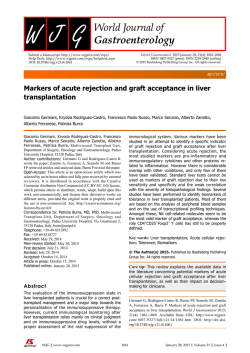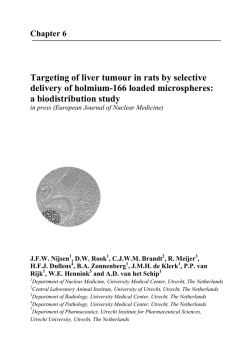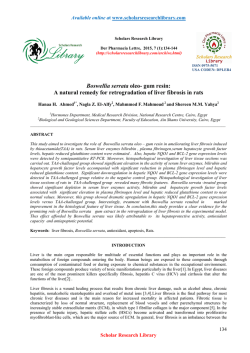
Hepatitis C Virus Serum Markers and Liver Disease in
From www.bloodjournal.org by guest on February 6, 2015. For personal use only. Hepatitis C Virus Serum Markers and Liver Disease in Children With Leukemia During and After Chemotherapy By Anna Locasciulli, Daniela Cavalletto, Patrizia Pontisso, Luisa Cavalletto, Elena Scovena, Cornelio Uderzo, Giuseppe Masera, and Alfredo Alberti The pattern of hepatitis C virus (HCV) serum markers and liver disease was investigated in 11 leukemic children showing anti-HCV reactivity at least once during long-term observation to define the role of HCV infection and the behavior of HCV serologic markers in this patient cohort. Antibodies to HCV by first- and second-generation enzyme-linked immunosorbent assay (ELISA)and by secondgeneration (four antigens) recombinant immunoblotting assay (RIBA) and HCV-RNA by nested polymerase chain reaction (PCR) were serially examined in serum. Liver disease was defined according to transaminase levels. Seven of 11 patients were found HCV-RNA positive during chemotherapy and after blood transfusion, 3 of 11 became viremic during follow-up, and 1 of 11 was always HCVRNA negative. Seroconversion to anti-HCV positivity by second-generationELISA occurred in all the HCV-RNA positive children either during or after chemotherapy. Alanine aminotransferase (ALT) levels were elevated in all the HCV-RNA positive patients during antileukemictreatment and normalized in seven of them after therapy withdrawal, despite persisting viremia. These results indicate that HCV-RNA testing by polymerase chain reaction is required to correctly identify HCV infection in patients with leukemia while on chemotherapy. Viremia did not correlate with ALT levels and anti-HCV patterns. 0 1993 by The American Society of Hematology. B ble with the one observed in Italian volunteer blood donors (0.7% to 0.8%).* All of the patients treated in our institution are entered in prospective study of liver disease that is based mainly on periodic clinical and biochemical assessment, including tests for hepatitis virus markers during and after chemotherapy. We observed that some patients did develop antiHCV positivity during follow-up, a finding that became particularly evident after the second generation enzyme-linked immunosorbent assay (ELISA) test was introduced for screening in May 1991. Here we investigate the pattern of HCV serum markers, including the anti-HCV reactivities as detected by the firstand second-generation ELISA and by the recombinant immunoblotting assay (RIBA) confirmatory test and serum HCV-RNA measured by PCR, having selected for this study those cases who showed serum anti-HCV reactivity at least once during long-term observation. The aim is to determine the contribution of HCV infection to biochemical evidence for liver disease in our patients with leukemia and the behavior of HCV diagnostic markers in this particular patient population. IOCHEMICAL and clinical signs of liver disease occur frequently during chemotherapy in patients with leukemia and correct recognition of etiologic factors is needed to define the most rational treatment.’ Besides the toxic effect of drugs, parenterally acquired viral hepatitis, mainly of the nonA, nonB type, plays a significant role in this clinical setting.*s3The ability to diagnose the infection as caused by hepatitis C virus, the main bloodborn nonA, nonB agent,“ has dramatically improved in recent years. Indeed, first- and second-generation immunoassays have been introduced to test for the different antiviral antibodies in serum and the polymerase chain reaction (PCR) can also be used to measure viremia d i r e ~ t l y .Anti~.~ HCV screening by means of the first-generation test has been available in our institution since January 1990, and soon after its introduction all children receiving chemotherapy for leukemia were studied for serum anti-HCV reactivity. Although more than two thirds of these patients had evidence of ongoing chronic liver disease, according to persistent alanine aminotransferase (ALT) elevation, only 1 of 1 14 patients (0.7%) had detectable anti-HCV reactivity in serum when tested once during the on-therapy period, usually at the time of significant abnormalities in liver enzyme levels (unpublished data). This figure was far below the prevalence of anti-HCV positivity seen in our transfusion-dependent thalassemic children (76%),’being compara- From the Division of Pediatric Hematology, University of Milano, Monza; and the Clinica Medica 11, University of Padova, Italy. Submitted February 8, 1993; accepted June 21, 1993. Supported by Comitato “ML Verga”per lo studio e la cura delle leucemie infantili. Address reprint requests to Anna Locasciulli, MD, Ematologia Pediatrica, Nuovo Ospedale “S. Gerardo, Via Donizetli, 106, 20052 Monza (Milano) Italy. The publication costs of this article were defayed in part by page charge payment. This article must therefore be hereby marked “advertisement” in accordance with 18 U.S.C. section 1734 solelyto indicate this fact. 0 1993 by The American Society ofHematology. 0006-49 71/93/S208-0007$3.00/0 ” 2564 MATERIALS AND METHODS Patients. Patients with leukemia treated at the Department of Pediatric Hematology, S. Gerardo Hospital, Monza, are prospectively followed for liver disease since presentation. Antileukemic treatment is performed according to the Italian Cooperative Protocols for Acute Lymphoblastic Leukemia (ALL)’ and Acute Myeloid Leukemia (AML).9 Briefly, therapy for ALL, consisting of induction, consolidation, and maintenance phases, for a duration of 2 years, includesthe following drugs: vincristine (VCR), daunorubicin (DNR), L-asparaginase, prednisone (PDN), cyclophosphamide (CPM), cytosine arabinoside (Ara-C), 6-mercaptopurine (6MP), methotrexate (MTX) high (5,000 mg/m2) and standard (20 mg/m)’ dose; prophylaxis of central nervous system (CNS) involvement is performed with intrathecal (IT)MTX alone or in combination with Ara-C and PDN, with or without 1,800 rad cranial irradiation. Polychemotherapy for AML is based on anthracyclines, Ara-C standard (200 mg/m2)and high (3,000 mg/m2) dose, etoposide, CPM, and 6-thioguanine for induction and consolidation phases lasting 4 months. CNS prophylaxis is performed with Ara-C IT. In the absence of an HLA-identical donor, patients are subseBlood. Vol 82,No 8 (October 15). 1993: pp 2564-2567 From www.bloodjournal.org by guest on February 6, 2015. For personal use only. 2565 HCV INFECTION IN CHILDHOOD LEUKEMIA quently randomized to receive autologous bone marrow (BM) transplantation or maintenance therapy with 6-TH, Ara-C, and anthracyclines for a duration of 2 years. For this study, we selected patients diagnosed from 1988 to 1989, as all of them had sera stored both at -20°C and -70°C and could be observed after chemotherapy withdrawal. Among 89 children with various forms of leukemia diagnosed in our institution in this 2-year period, 57 (64%)completed chemotherapy treatment in first complete remission. Eleven of 57 (19.2%) were found anti-HCV positive in serum at least at one occasion during follow-up and were thereby included in this study. There were six boys and five girls, with a mean age at diagnosis of 8.2 years (range: 2.2 to 12.9 years). Ten patients had ALL and one AML, according to the French-American-British (FAB) classification." All children were treated with antileukemic drugs for a median period of 24 months (range 4 to 28 months). Median follow-up was 32 months (range: 28 to 5 1 months) from diagnosis and 10 months (range: 4 to 27 months) from treatment withdrawal. All children had been transfused and the average number oftransfusions was 15 per patient (range: 6 to 107). None received intravenous (IV) immune globulin, which may produce passive ELlSA and RIBA positivity, during the entire period of observation. None had a positive history of liver disease or had received blood or blood products before the onset of leukemia. Assessment of liver disease. The I 1 children included in this study were monitored after the diagnosis of leukemia for clinical and biochemical evidence of liver disease, using the following parameters: serial testing of serum ALT, alkaline phosphatase (AP), bilirubin, albumin, and prothrombin time. Serum samples were regularly stored at -20°C and -70°C. Assessment of hepatitis B (HBV and C (HCW serum markers. HBV markers, including HBsAg, anti-HBs, and antiHBc, were tested in serum by commercially available radioimmunoassay (Abbott Laboratories, North Chicago, IL). Antibodies to HCV (anti-HCV) were detected by first- and second-generation Ortho-ELISA tests (Ortho Diagnostic Systems, Raritan, NJ) and the methods and evaluation of results were performed according to the manufacturer's instructions. To define the specificity of the results obtained by ELISA, reactive sera were also investigated by RIBA. For this purpose, sera were analyzed by second-generation (four antigens) RIBA (Chiron Corp, Emeryville, CA and Ortho Diagnostic Systems), following the manufacturer's instructions. Table 1. Hepatitis C Virus Serum Markers and Transaminase Profile in 11 Children With Acute Leukemia Within 6 mo From Diagnosis No. of patients: Anti-HCV positive by firstgeneration ELISA" Anti-HCV positive by second-generation ELISA' HCV-RNA positive by PCR No. of patients with raised ALTt Meanlmedian ALT value$ A t The End of Treatment At Latest Follow-Up 011 1 011 1 211 1 311 1 211 1 911 1 611 1 11/11 711 1 1111 1 10111 311 1 4041400 2121146 1371134 Confirmed by RIBA. t ALT, serum alanine aminotransferase. t Normal value < 40 IU/L. Table 2. Serum HCV-RNA and Liver Disease in 10 Children With Leukemia and Evidence of HCV Infection During treatment: Mean ALTO value Type of liver disease Resolved hepatitis Chronic hepatitis Outcome of Liver disease when off therapy: Normalization s6 mo Ongoing hepatitis Group A' (6 cases) Group B t (1 case) Group CS (3cases) 101.5 L -37 160 125 f 58 - - - 6 1 4 2 1 3 3 - Difference among groups A, B and C were not significant. Group A, early HCV-RNA detection (< = 2 months from presentation). t Group B, late HCV-RNA detection (9 months from presentation). t Group C, seroconversionfrom HCV-RNA- to HCV-RNA+. § ALT, serum alanine aminotransferase; normal value < 40 IU/L. HCV-RNA was detected in serum using the nested PCR technique. Two sets of primers specific for the 5' untranslated region (5' UTR) were used. External primers: 5'-GCCATGGCGTTAGTATGAGT-3' (sense) and 3'-TCCAGAGCATCTGGCACGTA-5' (antisense). Inner primers: 3'-TATCCCACGAACGCTCACGG-5' (antisense) and 5'-GTGCAGCCTCCAGGACCCC-3'(sense). Amplification products were visualized by ethidium bromide staining. Two normal sera and water were used as negative control in each experiment and a known positive reference sample was also included." Blood components administered to the patients were obtained from HBsAg-negative volunteer donors, who were also tested for the presence of anti-HCV since January 1990. This investigation was approved by local institutional human research committees. RESULTS The results of serum HCV markers and of transaminases during the observation period in the 1 1 patients with leukemia are summarized in Table 1. Six patients were found HCV-RNA positive in serum early in the course of leukemia, usually I to 2 months after diagnosis and blood transfusion. None of them was positive for anti-HCV by firstgeneration ELISA while 50% (three cases) were positive by second-generation ELISA. All six patients had evidence of chronic hepatitis during chemotherapy with persistent (four cases) or intermittent (two cases) elevation of ALT. Four of them (Table 2, group A) normalized ALT after cessation of chemotherapy, although viremia persisted, whereas two maintained abnormal ALT up to the end of follow-up. Only 1 of the 6 children had jaundice during follow-up. At the end of the chemotherapy period (Table l ) , seven patients were HCV-RNA positive. All of them had raised ALT, as the four additional cases who were HCV-RNA negative. Anti-HCV was not found in any of the cases by first-generation ELISA whereas it was positive in two and negative in five HCV-RNA-positive cases by second-generation ELISA. However, all but one HCV-RNA positive patients From www.bloodjournal.org by guest on February 6, 2015. For personal use only. 2566 LOCASCIULLI ET AL became anti-HCV positive after cessation of chemotherapy. Overall, 10 of 11 patients (90.9%)were HCV-RNA positive in serum at latest follow-up (Table 1). The patient HCV-RNA negative had a unique false positivity for anti-HCV by second-generation ELISA not confirmed by RIBA. The behavior of liver disease after chemotherapy withdrawal in the 10 HCV-RNA positive cases was as follows (Table 2): seven patients showed normalization of ALT within 6 months although with persistent viremia, whereas three children continued to have elevated ALT levels. Among the 7 children with normal biochemical profile at 6 months, 3 had experienced a sharp peak in ALT levels shortly after cessation of treatment, followed by rapid and complete normalization. In the other 4 cases, biochemical improvement was concomitant with chemotherapy withdrawal. The relation between the outcome of liver disease and anti-HCV reactivity by second generation assay was analyzed after chemotherapy withdrawal (Table 3). Ofthe 3 patients with ongoing hepatitis off-therapy, 2 were persistently anti-HCV positive and t showed intermittent reactivity. Among the 7 cases showing ALT normalization, 5 resulted persistently positive whereas in the remaining 2 anti-HCV appeared only transiently. HBsAg remained negative in serum during follow-up in the 11 children, whereas anti-HBs or anti-HBC and antiHBs were transiently positive in 5 and 4 patients, respectively. DISCUSSION Signs of liver damage, mainly represented by elevation of transaminase levels, are frequently detected in patients with leukemia when on chemotherapy and, among the various possible etiologic factors, an important role is attributed to infection with hepatitis viruses, whose expression and replication is certainly favored by immunosuppression.',12We have previously documented the role of hepatitis B v i r ~ s , ' ~but , ' ~many patients have chronic liver disease in the absence of a positive hepatitis B serology. Therefore, we have analyzed the possible role of hepatitis C virus using available serologic assays for the detection of anti-HCV and the PCR for the study of serum HCV-RNA. Screening of patients sera by anti-HCV with second-generation assays showed a group of patients who became antibody positive during follow-up. These results were compared with those obtained with first-generation ELISA and all patients were also analyzed for HCV-RNA in serum by the sensitive PCR to assess the prevalence and behavior of viremia. The results obtained during and after the period of chemotherapy show Table 3. Pattern of Liver Disease and Anti-HCV Profile in 10 Leukemic Children With Viremia After Therapy Withdrawal Anti-HCV Positivity: ALT Normalization (7 cases) Ongoing Hepatitis (3 cases) Persistent Transient Intermittent 517 217 213 - - 113 that first-generation assays are insensitivein detection of the infection, either in the early phase or during further followup, as most HCV-RNA positive patients were negative by ELISA for anti-C100-3 during the observation period. Other studies have shown that immunosuppression has a more profound influence on the ability of HCV-infected patients to produce a n t i c 100 compared with production of anti-C22I5and our findings are in agreement with the conclusion that anti-C 100 testing greatly underestimates HCV infection. Second-generation ELISA was more sensitive in this respect and several patients developed anti-C22 and/or antLC33 either during chemotherapy or after its withdrawal. Overall, when on chemotherapy, 7 of 11 patients were HCV-RNA positive: none of them were anti-HCV positive by first-generation assay and three were anti-HCV positive by second-generation assay, leaving four patients with viremia but without detectable anti-HCV. All four patients became anti-HCV positive when off therapy. These results clearly confirm that HCV-RNA testing by PCR is required to correctly identify HCV infection in patients under immunosuppression. However, it should be mentioned that there are still limitations on the availability of HCV-RNA testing and that the reliability of HCV-RNA detection by PCR among laboratories has been reported to be poor.I6 Interestingly, serum HCV-RNA remained detectable after chemotherapy withdrawal in all the patients, whereas transaminases, which were elevated while on antileukemic treatment, normalized in several of them during follow-up. This would suggest that either HCV was not the main cause of liver damage, which could have been related to drug toxicity, or that the cytopathic effect of the virus was potentiated by immunosuppression, then being attenuated after restoration of immunocompetence. Another possibility is that the association of antileukemic drugs and HCV infection could lead to complementary liver-damaging processes, as is well established in alcoholics with severe liver disease.",'' Efforts in this study to identify factors that might predict progression of liver disease were unrewarding. Neither the severityof the liver disease, defined by the mean ALT levels, nor the pattern of anti-HCV reactivity during and after chemotherapy had a clear-cut profile. In agreement with other st~dies,'~-'~ the observation that patients with biochemical resolution remained positive for HCV-RNA could suggest that persistent infection in the absence of liver inflammation may occur similarly to that observed in HBsAg camers. On the other hand, the apparent absence of liver disease among patients with viremia might be caused in part by the strict criteria based on ALT levels we commonly use to define liver disease. Indeed, progressive liver disease has even been documented in patients with normal ALT.'pL9 Interestingly, we observed no severe hepatitis reactivation after chemotherapy withdrawal, despite the fact that all the children remained viremic. Three of them showed symptomless ALT peaks shortly after cessation of chemotherapy, followed by enzyme normalization within 6 months. This observation is in agreement with previous studies performed in larger series of children with leukemia followed 0ff-thera~y.I~ Indeed, we have never observed a fulminant hepatitis following immune reconstitution after chemother- From www.bloodjournal.org by guest on February 6, 2015. For personal use only. HCV INFECTION IN CHILDHOOD LEUKEMIA apy withdrawal also in children with hepatitis B,22in contrast to other experiences.23324 In regard to anti-HCV profiles, we had serial sera only in a proportion of patients, because in leukemic children it is often very difficult to take blood samples. However, in the cases with serial testing, we observed that a persistent anti-HCV reactivity was present not only in patients with ongoing hepatitis, but also in cases with ALT normalization. This observation is in contrast with a previous in which we established a close correlation between persistence of anti-HCV and progression of liver disease. The need for prolonged follow-up of patients surviving leukemia with chronic HCV infection is emphasized by the fact that the natural history of HCV infection has not been fully clarified and that additional late consequences are likely.Ig Thus, our observation in this study cohort continues. REFERENCES 1. Locasciulli A, Mura R, Fraschini D, Gornati GL, Scovena E, GervasoniA, Uderzo C, Masera G: High-dosemethotrexate administration and acute liver damage in children treated for acute lymphoblastic leukemia. A prospective study. Haematologica 77:49, 1992 2. Locasciulli A, Alberti A, Rossetti F, Santamaria M, Santoro N, Madon E, Miniero R, Lo Curto M, Tamaro P, Paolucci P, Casale F, Nespoli L, Tucci F, Masera G Acute and chronic hepatitis in childhood leukemia: A multicentric study from the Italian Pediatric CooperativeGroup for Therapy of Acute Leukemia (AILAIEOP). Med Pediatr Oncol 13:203, 1985 3. Foon KA, Yale C, Glodfelter K, Gale RP: Posttransfusion hepatitis in acute myelogenousleukemia: Effect on survival. JAMA 244: 1806, 1980 4. Choo QL, Kuo K, Weiner AJ, Overby LR, Bradley DW, Houghton M: Isolation of a cDNA clone derived from a bloodborne nonA, nonB viral hepatitis genome. Science 224:359, 1989 5. Shimizu YK, Weiner AJ, Rosenblatt J. Early events in hepatitis C virus infection of chimpanzees. Proc Natl Acad Sci USA 87:6441, 1990 6. Kaneko S, Unoura M, Kobayashi K, Kuno K, Murakami S, Hattori N. Detection of serum hepatitis C virus RNA. Lancet 335:976, 1990 7. LocasciulliA, Monguzzi W, Tornotti G, Bianco P, Masera G: Hepatitis C virus infection and liver disease in children with Thalassemia. Bone Marrow Transplant 12:18, 1993 (suppl 1) 8. Alberti A, Chemello L, Cavalletto D, Tagger A, Dal Canton A, Bizzamo N, Tagariello G, Ruol A: Antibody to Hepatitis C virus and liver disease in volunteer blood donors. Ann Intern Med 114:1010, 1991 9. Amadori S, Arcese W, Isacchi G, Meloni G, Petti MC, Monarca B, Testi A, Mandelli F: Mitoxantrone, etoposide, and intermediatedose cytarabine: An effective and tolerable regimen for the treatment of refractory acute myeloid leukemia. J Clin Oncol 9:1210, 1991 10. Bennett JH, Catovsky D, Daniel M, Flandrin G, Galton 2567 DAG, Gralnick HR, Sultan C: Proposal for the classification of the acute leukemias. Br J Haematol 33:451, 1976 1 I . Alberti A, Morsica G, Chemello L, Cavalletto D, Noventa F, Pontisso P, Ruol A: Hepatitis C viraemia and liver disease in symp tom-free individuals with anti-HCV. Lancet 340:697, 1992 12. Locasciulli A, Uderzo C, Pirola A, Masera G, Portmann B, Alberti A: Pattern of liver disease followinghigh-dose cytosine arabinoside (HDARAC) therapy in children with acute myeloid leukemia. Leuk Lymph 2:229, 1990 13. Locasciulli A, Mieli Vergani G, Uderzo C, Jean G, Cattaneo M, Vergani D, Portmann B, Masera G: Chronic liver disease in children with leukemia in long-term remission. Cancer 52: 1080, 1983 14. Vergani D, Locasciulli A, Masera G, Alberti A, Moroni G, Tee DH, Portmann B, Mieli Vergani G, Eddleston ALWF Histological evidence of hepatitis B virus infection with negative serology in children with leukemia who developed chronic liver disease. Lancet i:36 1, 1982 15. Alberti A Diagnosis of hepatitis C. Facts and perspectives.J Hepatol 12:279, 1991 16. Zaaijer HL, Cuypers HTM, Reesink HW, Winkel IN, Gerken G, Lelie PN: Reliability of polymerase chain reaction for detection of hepatitis C virus. Lancet 341:722, 1993 17. Mendenhall CL, Seff LB, Diehl AM: Antibodies to hepatitis B virus and hepatitis C virus in alcoholic hepatitis and cirrhosis: Their prevalence and clinical relevance. Hepatology 14% I , 1991 18. Noguchi 0, Yamaoka K, Ikeda T, Tozuka S, Sakamoto S, Kamayama M, Uchida T: Clinicopathological analysis of alcoholic liver disease complicating chronic type C hepatitis. Liver 11:225, 1991 19. Farci P, Alter HJ, Wong D, Miller RH, Shih JW, Jett B, Purcell RH: A long-term study of hepatitis C virus replication in nonA, nonB hepatitis. N Engl J Med 325:98, 1991 20. Alter MJ, Margolis HS, Krawczynski K, Judson FN, Mares A, Alexander WJ, Ya Hu P, Miller JK, Gerber MA, Sampliner RE, Meeks EL, Beach MJ, for the Sentinel Counties Chronic nonA, nonB Hepatitis Study Team: The natural history of community-acquired hepatitis C in the United States. N Engl J Med 327: 1899, 1992 21. Pereira BJG, Milford EL, Kirkman RL, Quan S, Sayre KR, Johnson PJ, Wilber JC, Levey AS: Prevalence of hepatitis C virus RNA in organ donors positive for hepatitis C antibody and in the recipients of their organs. N Engl J Med 327:910, 1992 22. LocasciulliA, Santamaria M, Masera G, Schiavon E, Alberti A, Realdi G: Hepatitis B virus markers in children with acute leukemia: The effect of chemotherapy. J Med Virol 15:29, 1985 23. Galbraith RM, Eddleston ALWF, Williams R, Zuckerman AJ, Bagshawe KD: Fulminant hepatic failure in leukaemia and choriocarcinoma related to withdrawal of cytotoxic drug therapy. Lancet ii528, 1975 24. Webster A, Breener MK, Prentice HG, Griffiths PD: Fatal hepatitis B reactivation after autologous bone marrow transplantation. Bone Marrow Transplant 4:207, 1989 25. Locasciulli A, Gornati G, Tagger A, Ribero ML, Cavalletto D, Cavalletto L, Masera G, Shulman HM, Portmann B, Alberti A: Hepatitis C virus infection and chronic liver disease in children with leukemia in long-term remission. Blood 78:1619, 1991 From www.bloodjournal.org by guest on February 6, 2015. For personal use only. 1993 82: 2564-2567 Hepatitis C virus serum markers and liver disease in children with leukemia during and after chemotherapy A Locasciulli, D Cavalletto, P Pontisso, L Cavalletto, E Scovena, C Uderzo, G Masera and A Alberti Updated information and services can be found at: http://www.bloodjournal.org/content/82/8/2564.full.html Articles on similar topics can be found in the following Blood collections Information about reproducing this article in parts or in its entirety may be found online at: http://www.bloodjournal.org/site/misc/rights.xhtml#repub_requests Information about ordering reprints may be found online at: http://www.bloodjournal.org/site/misc/rights.xhtml#reprints Information about subscriptions and ASH membership may be found online at: http://www.bloodjournal.org/site/subscriptions/index.xhtml Blood (print ISSN 0006-4971, online ISSN 1528-0020), is published weekly by the American Society of Hematology, 2021 L St, NW, Suite 900, Washington DC 20036. Copyright 2011 by The American Society of Hematology; all rights reserved.
© Copyright 2025
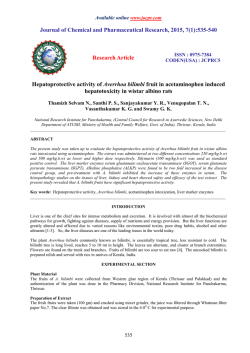
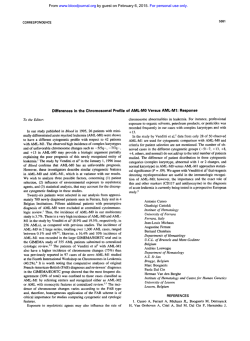

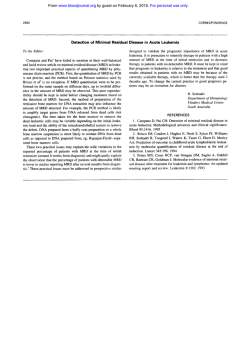
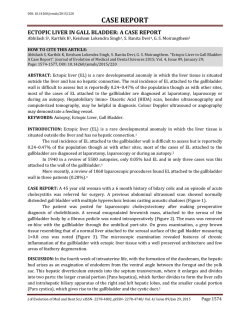
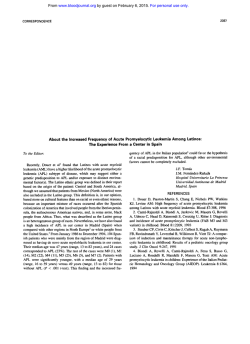
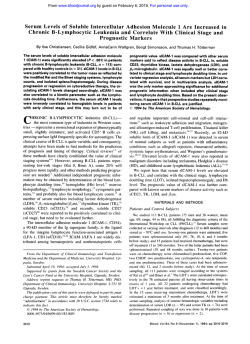
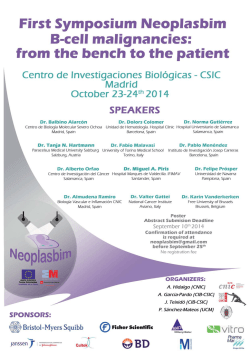

![Download [ PDF ] - journal of evolution of medical and dental sciences](http://s2.esdocs.com/store/data/000494682_1-a05d094f9efefa40e28645027f3e090c-250x500.png)
